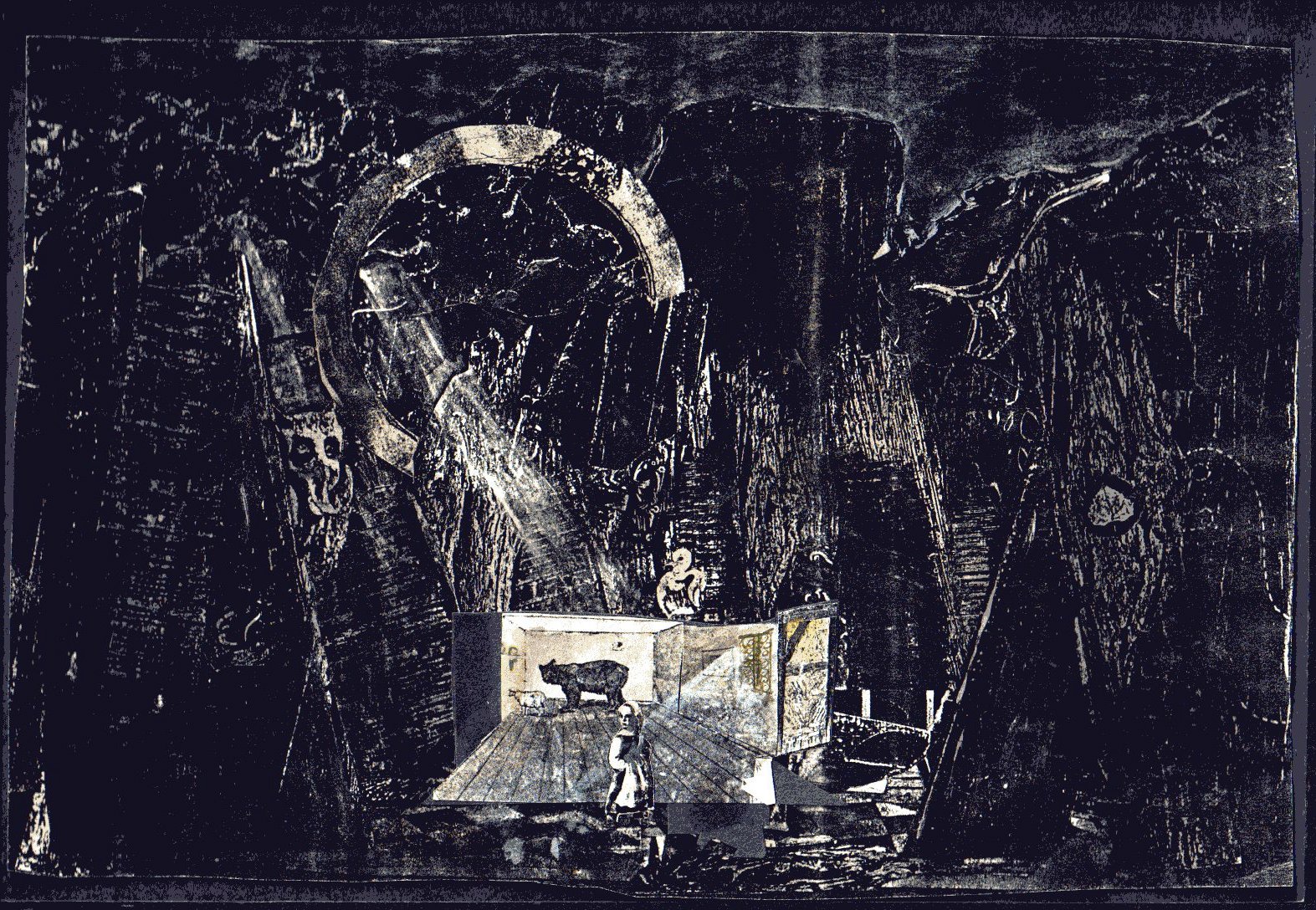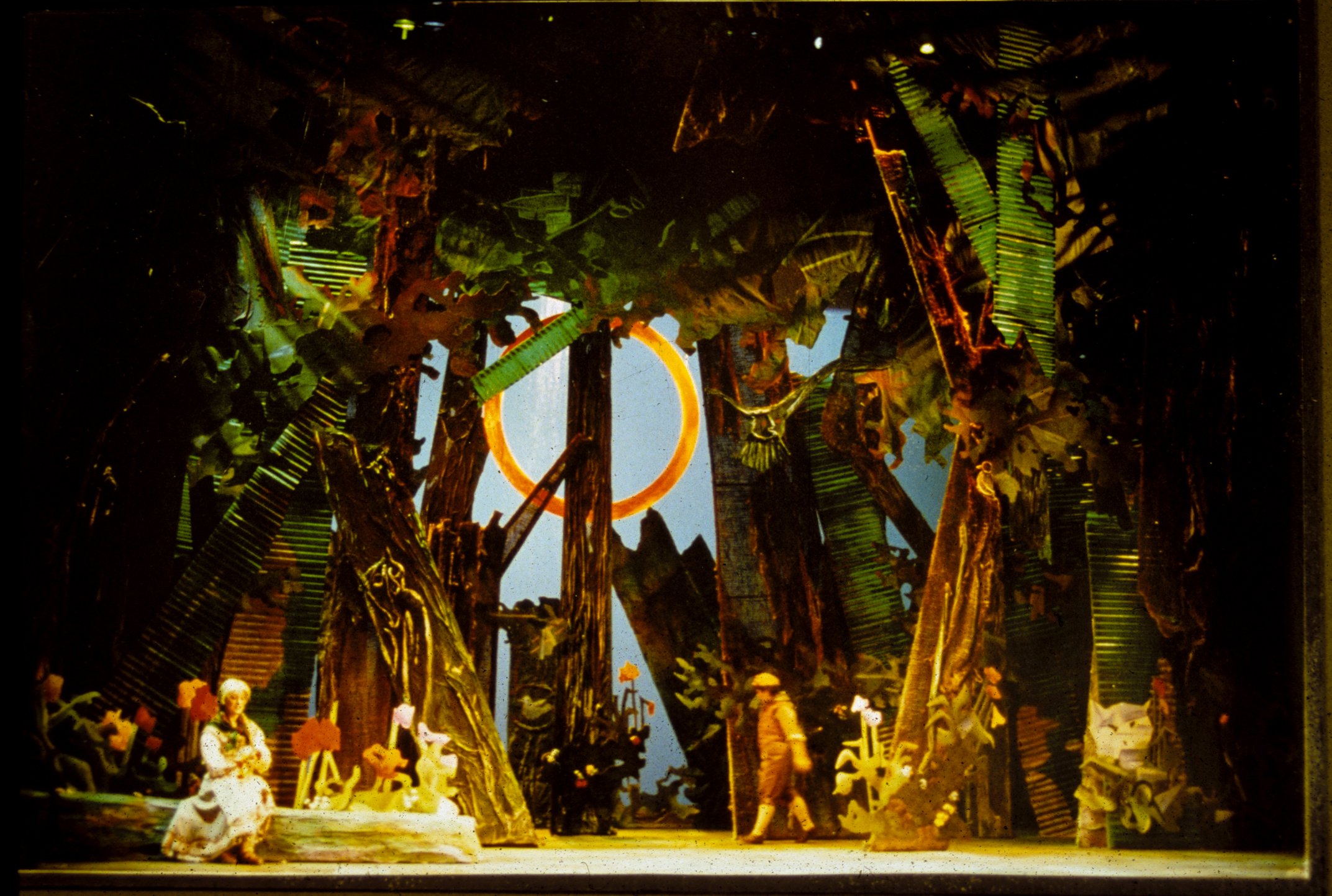

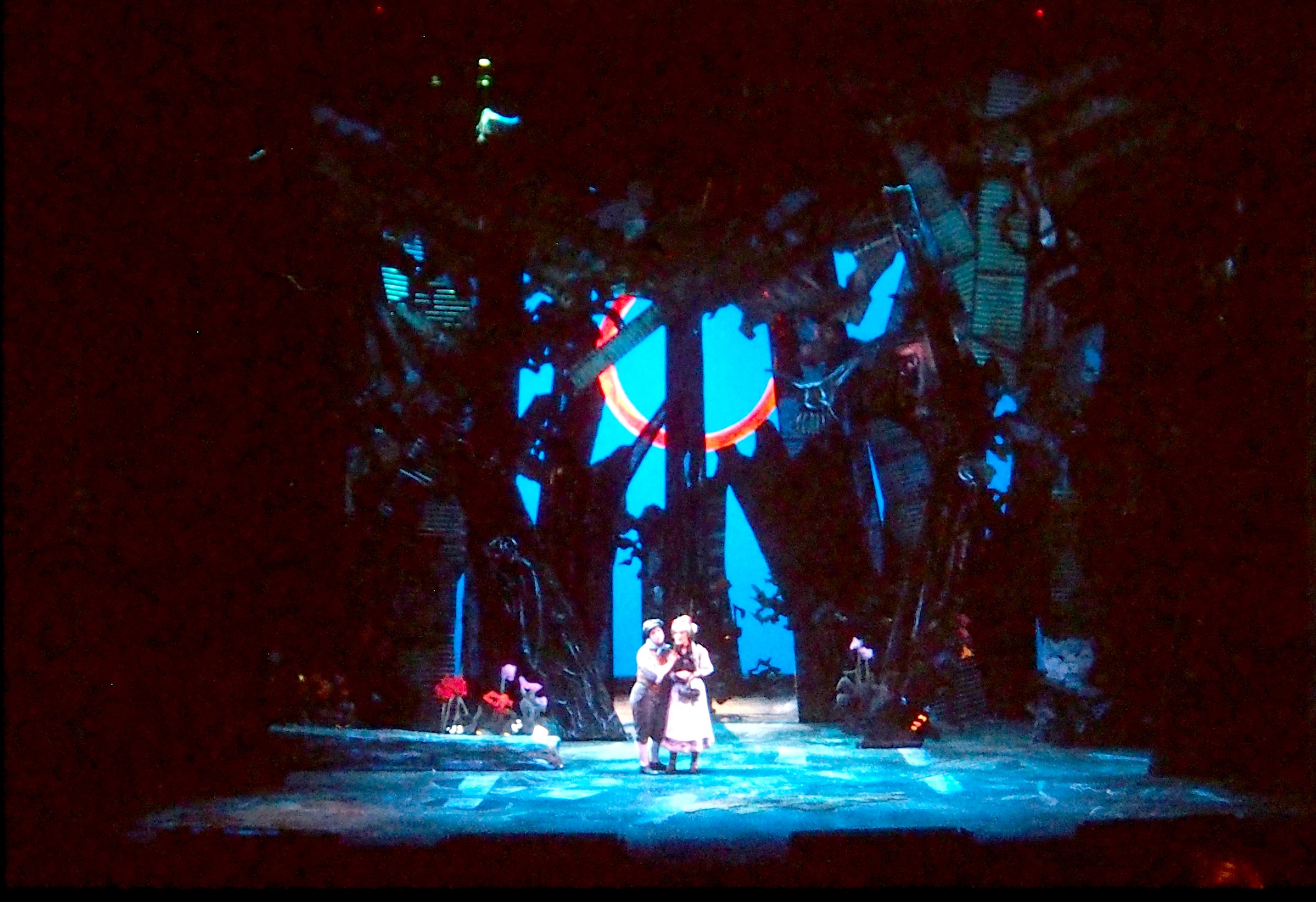
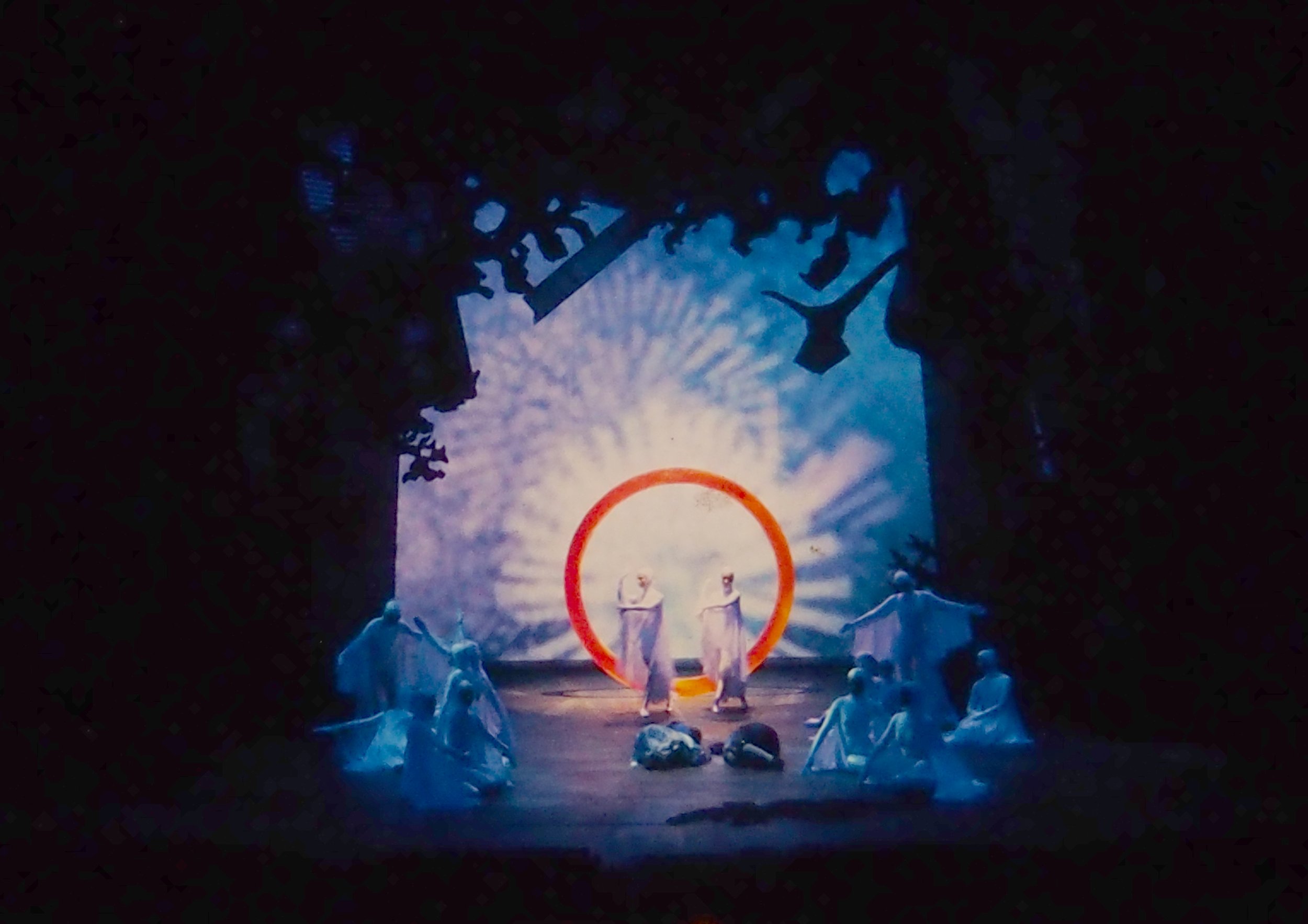
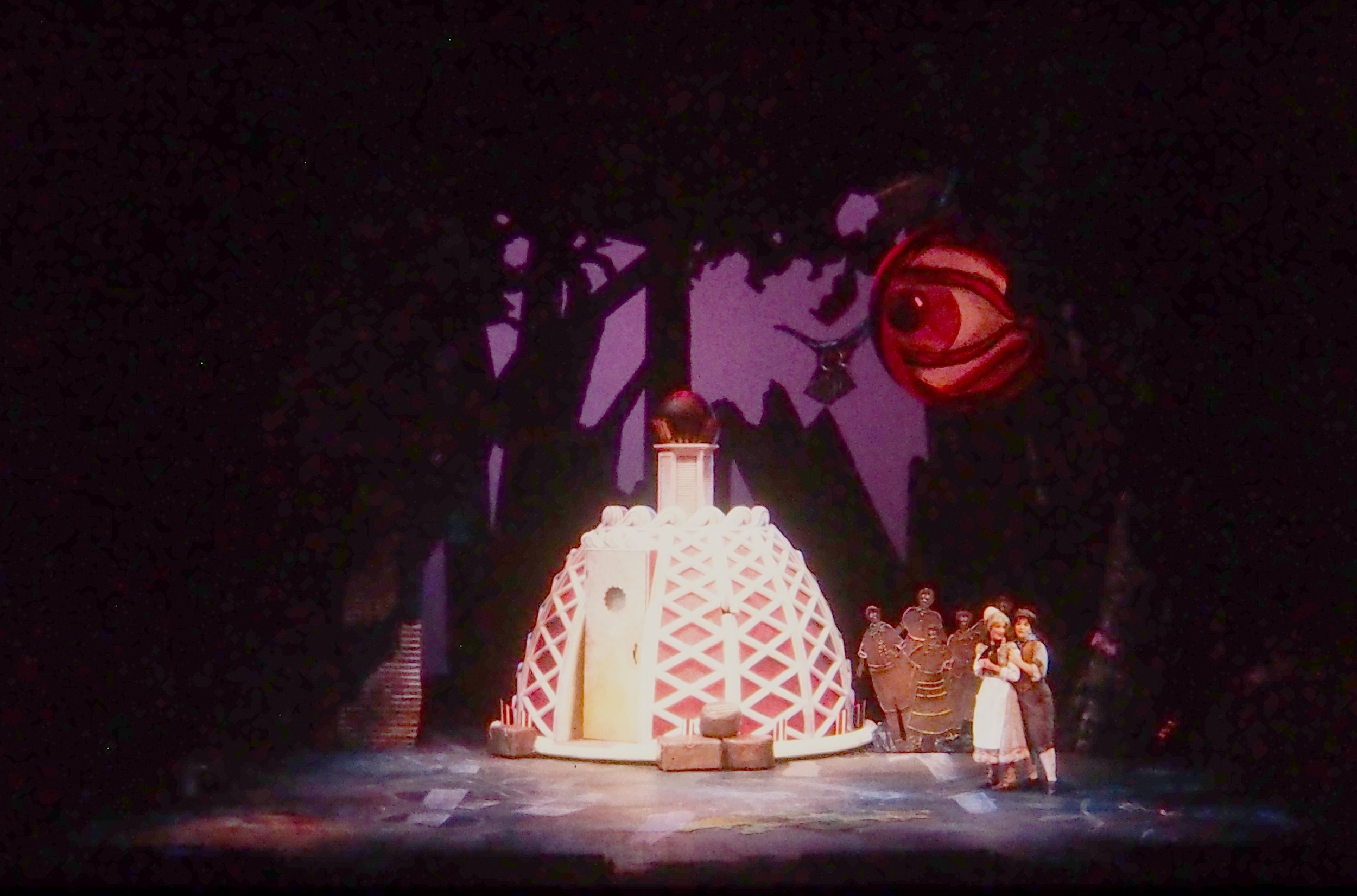
ABOUT THE DESIGN
This is an early career design, and maybe the most influential. The director, Bruce Donnell, came to the first meeting with the idea that the play would be well served with visual imagery of Arthur Rackham characters in a Max Ernst world. I was uncomfortable with what seemed an odd mashup, but Bruce’s confidence ultimately helped me see the power and beauty that stylistic contrasts can bring.
I also felt free to play. The design evolved through collage (like much of Ernst’s work), and the idea of collage continued in the choice of materials that made up the trees: corrugated fiberglass, erosion cloth, sculpted paper, and wood. The shop was able to repurpose old drops to make the borders. The tempting Witch’s house was modeled after one of the most popular pastries in the venue’s (the Krannert Center for the Performing Arts) cafe.
Ernst’s forest paintings often featured a ring, and that became a unifying symbol of good in the design. Each act had a different one. The second act ring was the largest and most active. When the children are lost and lay down to sleep, the forest cleared, the ring descended, and the angels danced through the ring to protect them.
PROCESS IMAGES
The design was featured in the 1994 USITT Design Expo and was chosen to be included in the expo edition of Theatre Design and Technology.
